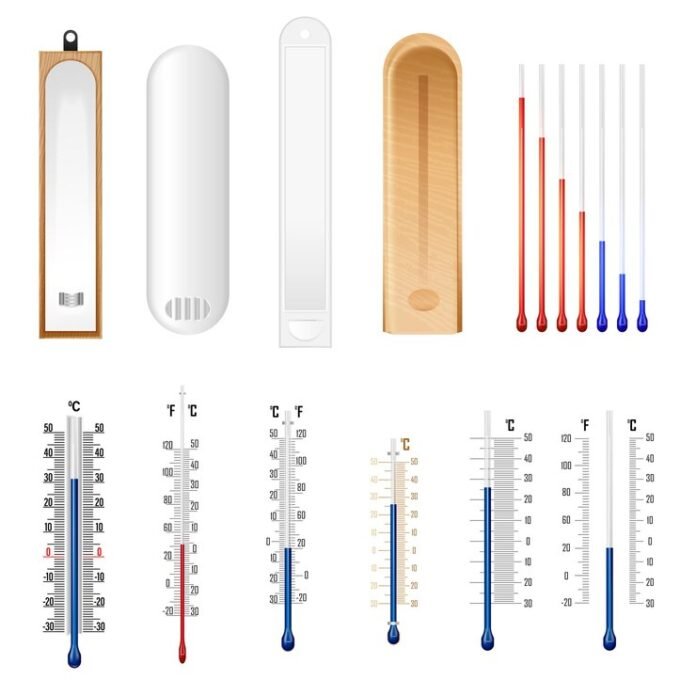Introduction
Temperature, like any other physical quantity, is defined as the measurement of a substance’s or object’s warmth or coolness about a standard value. While it is used to convey hot and cold situations, the temperature is normally measured via a thermometer that is labelled in multiple temperature scales, the most common of which are Celsius and Fahrenheit. There are several different temperature units, which we shall discuss below.
What is Temperature?
A temperature is a number that describes the hotness and coldness of the objects. Atoms and molecules in all materials are continuously moving, vibrating, or spinning. A tough subject is simplified; the faster they travel, the higher the rise of the temperature in the substance. The average kinetic energy of an object’s atoms and molecules may be used to describe its temperature, which is a simple definition of temperature. Kelvin is the unit of a fundamental physical quantity known as thermodynamic temperature (T), and it has been defined with the Boltzmann constant since 2019.
What is the SI Unit of Temperature?
Kelvin (K)- The SI system’s base temperature unit is the Kelvin (International System of Units). K is the abbreviation of Kelvin unit (no degree or degree sign). William Thomson (Lord Kelvin) initially proposed the Kelvin unit in 1848.
The Kelvin scale was created by relocating the Celsius scale’s starting point to absolute zero. The Kelvin scale was created with the redefinition of the SI system in 2019 by establishing the numerical value of the Boltzmann constant.
Celsius (°C)- In the SI system, Celsius is a unit for temperature, with kelvin serving as the base unit. Celsius is abbreviated as °C (degree Celsius), and one Celsius degree is equivalent to one kelvin. The Celsius scale’s two principal reference points were the freezing point of water at 0 °C and the boiling point of water at 100 °C.
A degree Celsius is equivalent to a degree Kelvin, and 0 K = -273.15 °C. The Celsius unit is more suitable for everyday usage than the kelvin unit and is widely used across the world, but less so in the United States.
Fahrenheit (°F)- The abbreviation for the Fahrenheit unit is °F. In 1724, a Dutchman called Gabriel Fahrenheit invented the Fahrenheit scale. The scale’s two major reference points are the freezing point of water (32°F) and the temperature of the human body (96°F).
The Fahrenheit scale is now redefined so that the melting point of ice is precisely 32 °F and the boiling temperature of the water is precisely 212 °F. On the updated scale, the human body temperature is around 98 °F.
Other Units of Temperature
Rankine (°R, °Ra)- °R or °Ra are abbreviations for the Rankine scale. The Rankine scale was introduced in 1859 by a Scottish named William Rankine, a few years after the Kelvin scale. The Rankine scale’s reference point is the absolute zero point, which is 0 °R, like in the Kelvin scale.
One Rankine degree is equal to one Fahrenheit degree, however as previously stated, the zero point is quite different. Water has a freezing point of 491.67 °Rankine. The Rankine scale is not commonly used. It was used in various domains of technology in the USA, however, NIST does not promote the use of Rankine anymore.
Réaumur (°Ré, °Re)- Réne de Réaumur invented the Réaumur scales in 1730. It uses the freezing point of water as a reference point and the boiling temperature of the water as a reference point. The Réaumur scale was used in various regions of Europe and Russia, but it has mostly disappeared throughout the previous century.
Cgs Unit of Temperature
The abbreviation “cgs” stands for centimetre-gram-second. As the terms imply, the cgs system is a variant of the metric system, except that instead of metres, centimetres are used for length, and kilograms are used for mass. Using these cgs basic units, many cgs mechanical units are produced.
The cgs is an obsolete system that has generally been superseded by the MKS (meter-kilogram-second) system, which has since been replaced by the SI system. Nonetheless, you may come across certain cgs units on occasion. Because the cgs system lacks its temperature units, it uses the same temperature units as other systems: Kelvin, Centigrade, and Fahrenheit.
Useful Temperatures
Scientists discovered several objects that were constantly around the same temperature when temperature scales were invented:
- Water freezes at 0°C, 32 degrees Fahrenheit, or 273.15 degrees Kelvin.
- The boiling point of water is 100 °C (373.15 K).
- The average body temperature is 37 degrees Celsius (98 degrees Fahrenheit).
Recommended Articles:
Unit of Torque: Definition, SI and Other Units
What are the Units of Vibration?
Unit of Voltage: Definition, Formula and SI Unit
Unit of Wavelength – Definition, Types, Symbol and Units
Unit of Work – Definition, Types and Units
Temperature is defined as a measurement of an object's thermal energy. According to the International System of Units, the SI unit of temperature is Kelvin. The SI system's base temperature unit is the Kelvin (International System of Units). Kelvin unit's abbreviation is K (no degree or degree sign). William Thomson (Lord Kelvin) initially proposed the Kelvin unit in 1848. The Kelvin scale is favoured above the Celsius scale for two reasons: It is an absolute temperature measurement. Because all thermal movements of things are most inhibited at this temperature point, the lowest temperature, or absolute zero, is considered universal. Unit of Temperature FAQs
Define temperature.
What is the SI Unit of Temperature?
Why is Kelvin preferred over Celsius?
It has a direct relationship with kinetic energy.
It is proportional to the volume of the material.Why is absolute zero considered to be universal?
